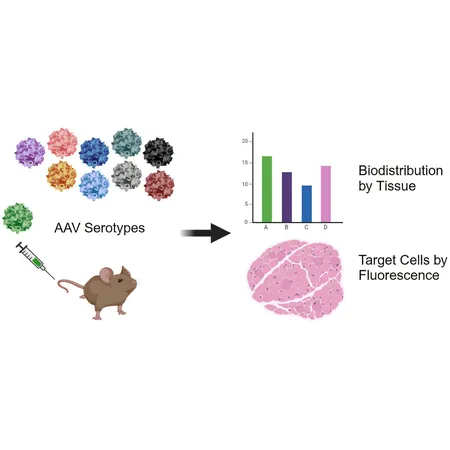
Groundbreaking Atlas Maps Ideal Viral Vectors for Gene Therapy Revolution
2025-04-01
Author: Rajesh
Introduction
Gene therapy is reshaping the landscape of medicine, offering transformative potential for treating a variety of genetic disorders, such as eye diseases, muscular dystrophies, and blood conditions. The heart of effective gene therapy lies in the precise delivery of genetic material to specific cell types and tissues.
The Groundbreaking Atlas
To enhance the efficacy of gene therapy, a collaborative team of researchers from Baylor College of Medicine, the Jackson Laboratory, and the University of Massachusetts Medical School has published a groundbreaking atlas that will serve as a crucial tool for scientists in selecting the optimal viral vectors for their therapeutic applications. This pivotal study, highlighted in the journal Molecular Therapy, promises to streamline gene therapy development by providing detailed insights into adeno-associated viruses (AAVs), the most widely used gene delivery systems in contemporary research.
Significance of AAVs
Dr. Christopher J. Walkey, the study's lead author and assistant professor at Baylor, emphasized the significance of AAVs: “Over the last three decades, AAVs have risen to prominence due to their efficiency and safety record.” The research team mapped the delivery of ten different AAV types across 22 tissues in male and female mice, the standard model for preclinical trials.
Targeting Desired Tissues
One of the major breakthroughs from this study is the ability of researchers to use the atlas to identify AAVs that specifically target desired tissues. For example, if a researcher is formulating a gene therapy for muscle-related conditions, they can pinpoint AAV vectors that preferentially concentrate in muscle tissue while avoiding unintended targets, significantly minimizing the risk of adverse effects.
Advanced Imaging Techniques
The research took a significant leap forward by employing advanced fluorescent imaging techniques that enable the observation of gene delivery at the cellular level, providing unprecedented granularity in understanding vector performance.
Notable Discoveries
Among the notable discoveries is the potential of AAV4, a less-studied vector, which was found to efficiently deliver genes to endothelial cells in blood vessels and insulin-producing beta cells in the pancreas, while largely bypassing the liver, which is often a target for other AAV types. This unique characteristic could open new avenues for gene therapies targeting vascular diseases and diabetes.
Implications of the Findings
“The implications of our findings are vast,” Walkey stated. “AAV4’s targeting of vascular tissues and beta cells could lead to groundbreaking therapies in areas that have struggled to find effective gene delivery methods.”
Future Prospects
The team is optimistic that this atlas will significantly benefit researchers by accelerating the development of improved gene therapy vectors for human health applications. The resource is publicly accessible, aiming to make preclinical gene therapy studies in mice more efficient by providing a thorough pre-existing understanding of which AAV is best suited for specific cell types.
Collaboration and Support
This remarkable endeavor was made possible through a collaboration under Phase I of the NIH's Somatic Cell Genome Editing Consortium, emphasizing the importance of teamwork in advancing scientific discovery.
Conclusion
As gene therapy continues to evolve, this atlas stands out as a beacon for future research, potentially leading to reliable and safer gene use across a multitude of conditions. Researchers around the globe are now empowered to harness this knowledge, paving the way for a new era in genetic medicine—where targeted therapies could one day help millions living with genetic disorders.


 Brasil (PT)
Brasil (PT)
 Canada (EN)
Canada (EN)
 Chile (ES)
Chile (ES)
 Česko (CS)
Česko (CS)
 대한민국 (KO)
대한민국 (KO)
 España (ES)
España (ES)
 France (FR)
France (FR)
 Hong Kong (EN)
Hong Kong (EN)
 Italia (IT)
Italia (IT)
 日本 (JA)
日本 (JA)
 Magyarország (HU)
Magyarország (HU)
 Norge (NO)
Norge (NO)
 Polska (PL)
Polska (PL)
 Schweiz (DE)
Schweiz (DE)
 Singapore (EN)
Singapore (EN)
 Sverige (SV)
Sverige (SV)
 Suomi (FI)
Suomi (FI)
 Türkiye (TR)
Türkiye (TR)
 الإمارات العربية المتحدة (AR)
الإمارات العربية المتحدة (AR)